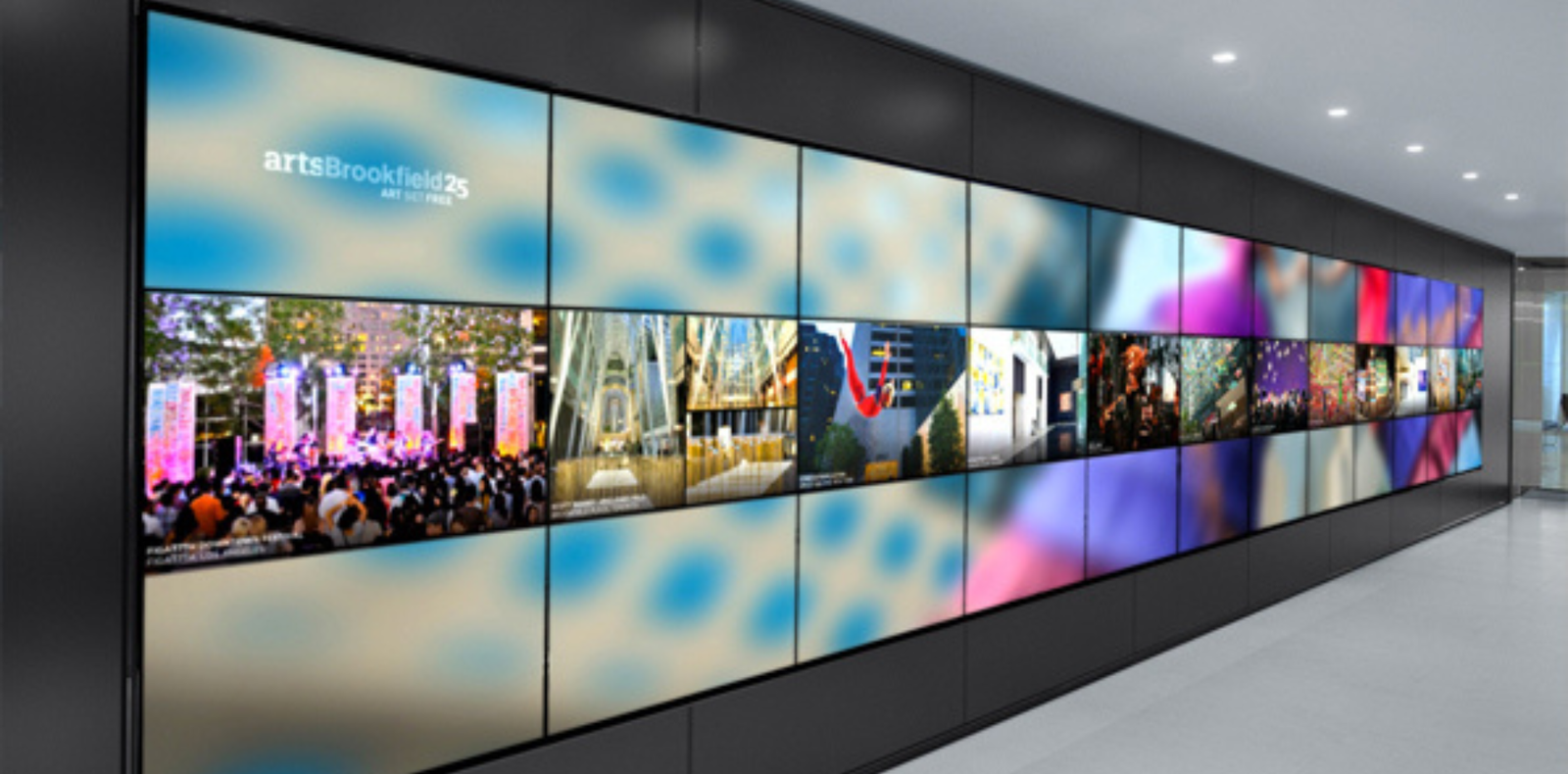What is Digital Signage?
Digital signage is a form of electronic display that shows multimedia content in public spaces. It uses LCD, LED, and projection technology to display information, advertisements, and messages in a visually engaging way. Found in various environments such as retail stores, offices, hotels, airports, and restaurants, digital signage captures attention and enhances communication through dynamic visuals.
With its ability to display real-time content and be updated instantly, digital signage is increasingly replacing traditional static posters and billboards. In this guide, we’ll explore what digital displays is, its types, and advantages, and how businesses can leverage it to engage audiences effectively.

Key Components of Digital Signage
1. Display Screens
- The screens used in digital signage can vary, including LED, LCD, or projection screens. These screens are designed for high brightness and durability to withstand various environments.
2. Media Players
- Media players store and display the content on screens, making them the core component that powers digital signage systems. They play scheduled content and allow for remote management.
3. Content Management System (CMS)
- The CMS is the software that enables users to control the content shown on digital display screens. With a CMS, users can upload, schedule, and organize content across multiple screens.
4. Network Connectivity
- Many digital display systems rely on internet connectivity to update and control content remotely, enabling real-time updates and adjustments.
Benefits of Digital Signage
1. Enhanced Engagement
Digital Displays captures attention with vivid visuals and movement, making it more effective than static posters or billboards.
2. Real-Time Updates
Businesses can update digital display content instantly, making it ideal for real-time information like schedules, promotions, and news.
3. Cost-Efficiency
While initial setup costs may be high, digital signage eliminates the need for reprinting, saving time and money in the long run.
4. Environmental Impact
Digital signage reduces the need for paper and printing materials, making it a sustainable solution for businesses aiming to reduce their carbon footprint.
How Does Digital Displays Work?
Digital display operates through a combination of hardware (screens and media players) and software (CMS and network). Content is created and uploaded to the CMS, which schedules and sends it to the media player connected to each screen. This setup allows for seamless updates and customization across multiple screens, often in different locations, with real-time control.
Types of Digital Signage
1. Indoor Digital Displays
- Commonly found in retail stores, offices, and restaurants, indoor digital display is designed to display promotions, menus, announcements, and other in-store content.
2. Outdoor Digital Signage
- Outdoor digital signage is often used for billboards, wayfinding in city areas, and advertisement displays. Built to withstand weather conditions, these screens are bright enough to be visible in sunlight.
3. Interactive Digital Signage
- Interactivedisplay allows users to engage with the content. It’s commonly seen in directories, kiosks, and information centers where users can find information or perform tasks.
4. Video Walls
- Video walls consist of multiple screens arranged together to form a larger display. These walls are highly effective in large spaces like malls, airports, and exhibition centers.
FAQs on Digital Display
Q1: What types of content can be displayed on digital display?
A: Digital display can display a variety of content, including videos, images, slideshows, live feeds, text, and animations.
Q2: Can digital display be customized for different audiences?
A: Yes, digital display allows for tailored content based on the time of day, location, and audience demographics.
Q3: How is digital display controlled?
A: Digital display is controlled through a CMS, which enables users to manage and schedule content remotely across multiple displays.
Q4: What industries benefit the most from digital display?
A: Retail, hospitality, healthcare, transportation, and education sectors benefit significantly from digital display for enhanced communication.
Q5: Is digital display energy-efficient?
A: Modern digital display solutions are designed to be energy-efficient, especially LED screens, which consume less power than older display technologies.
Final Thoughts
Digital signage is transforming the way businesses and organizations communicate with their audiences. By using dynamic, visually engaging displays, digital signage enhances engagement, improves brand visibility, and supports real-time communication. From retail stores to corporate offices and public spaces, digital signage offers versatile applications across industries, making it an invaluable tool for effective advertising and information sharing. With technological advancements, the future of digital signage looks promising, paving the way for even more interactive and customizable experiences.




